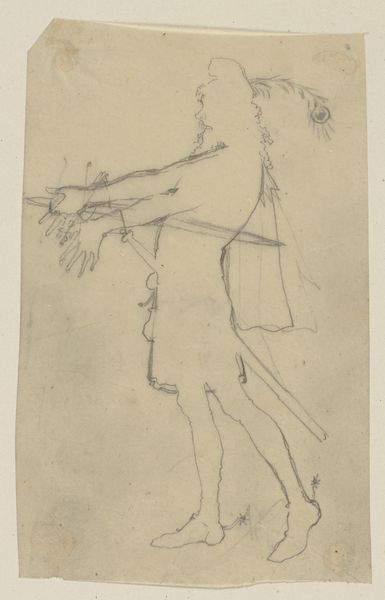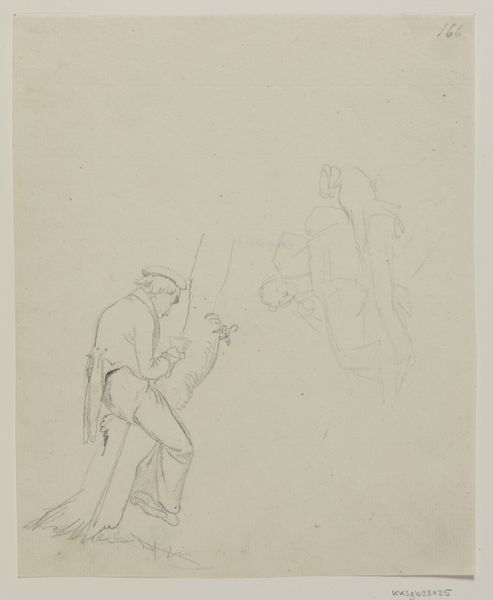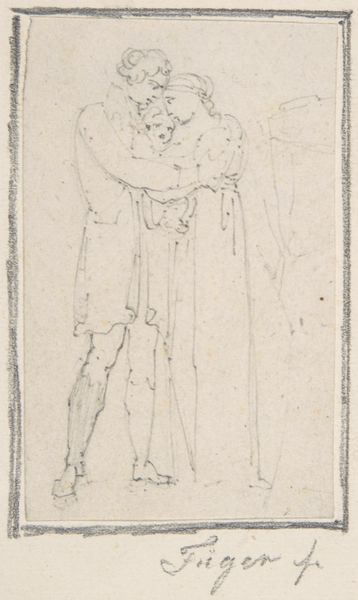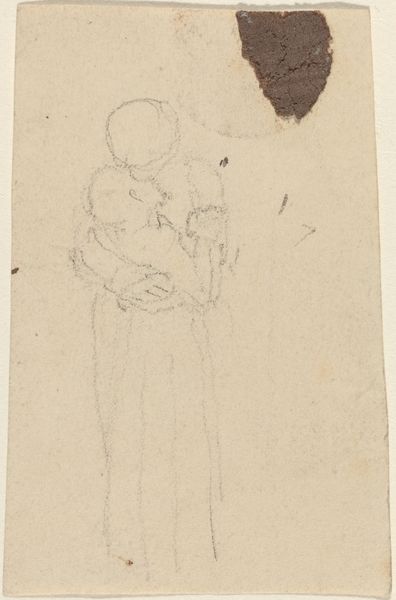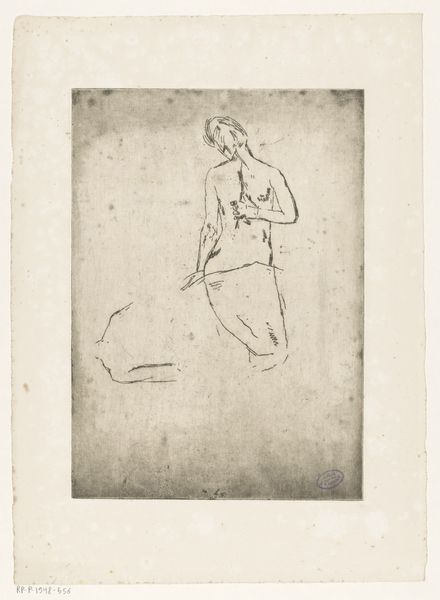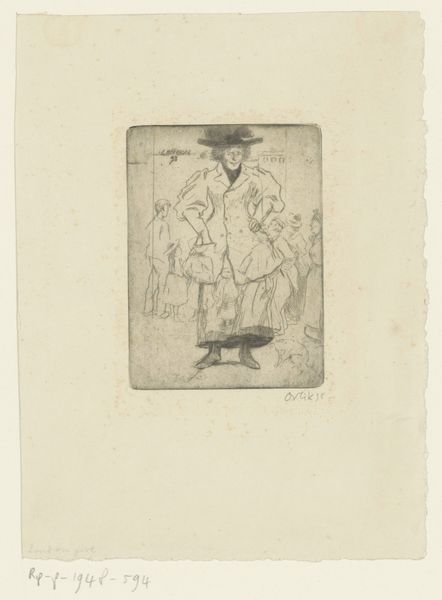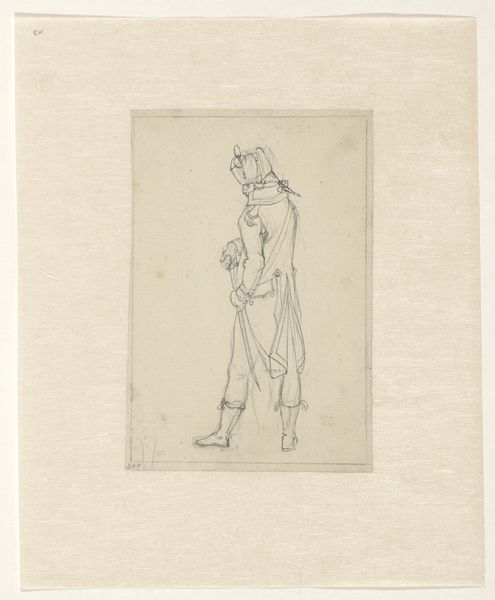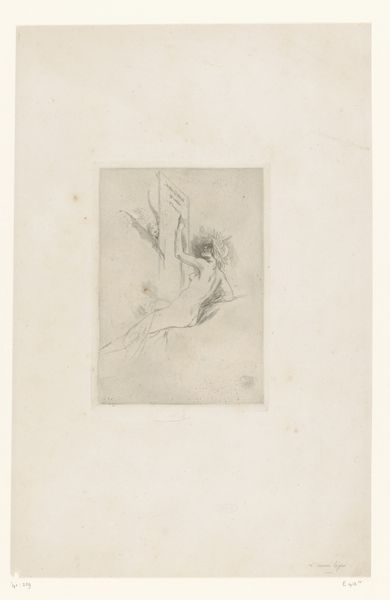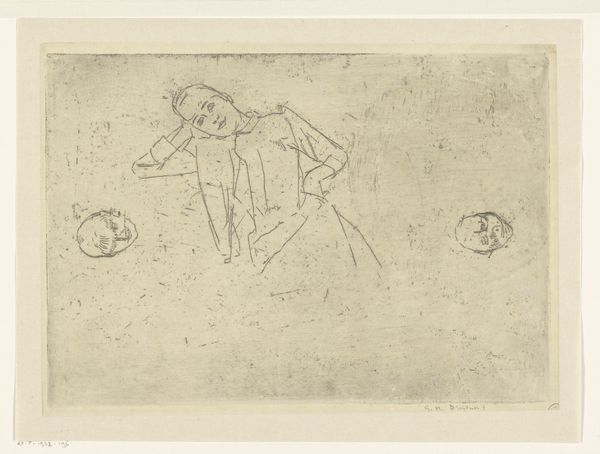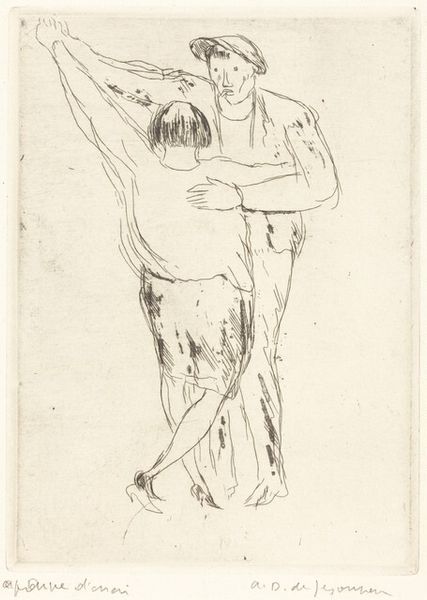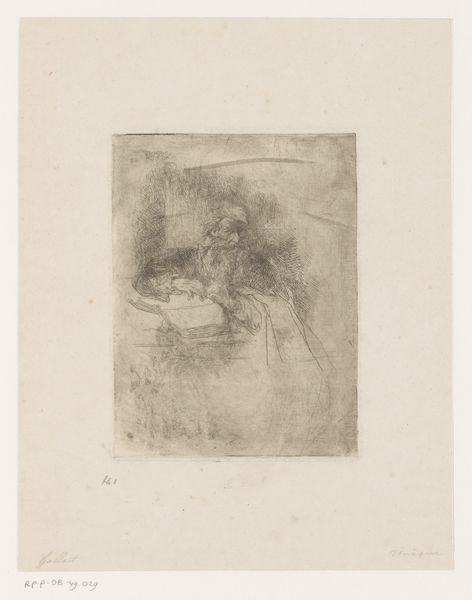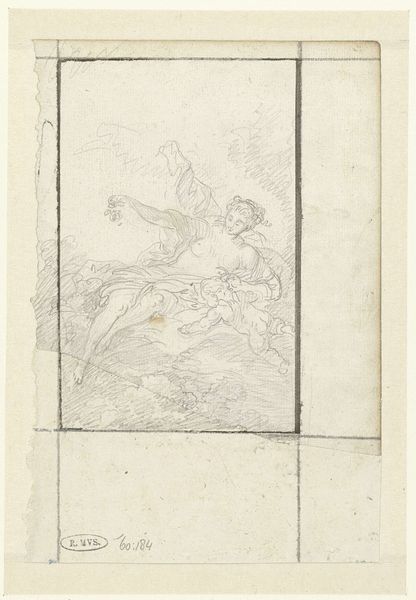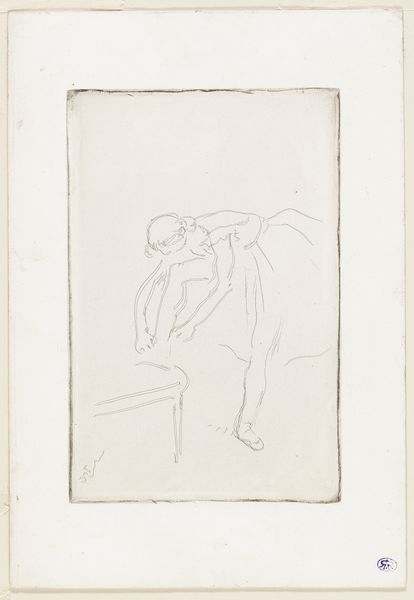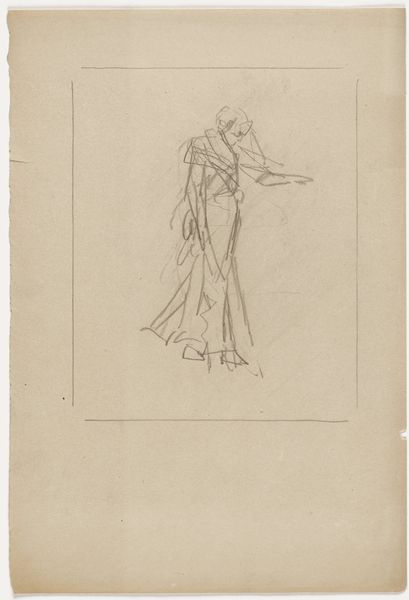
Dimensions: height 293 mm, width 251 mm
Copyright: Rijks Museum: Open Domain
Curator: Standing before us is a drawing by George Hendrik Breitner, titled "Staande, naakte vrouw," created around 1891-1893. It's rendered in ink and pencil on paper. Editor: There’s an immediacy to this piece that I find quite striking. It feels like a stolen glance, or a private moment caught in time. The simple, almost childlike lines create a surprisingly sensual atmosphere, no? Curator: Absolutely. Breitner’s work often captured the everyday, but with this nude, there’s a particular focus on the form. It echoes some impressionistic tendencies, though his style remains uniquely his own. There is so much attention to how light moves across the figure's form; there's such subtlety in the variations and textures! Editor: Subtlety yes, but I also feel a deliberate defiance against traditional academic nudes, no? The pose isn't idealized, the lines are quite rough, and there is little detail to speak of, creating an authenticity in this depiction of a nude, far from perfect but closer to a "real" person in front of us. Curator: I agree, I wonder about the model - did she share the social and economic freedom enjoyed by other women of her time? This contrasts quite sharply with the bourgeois respectability the patrons would certainly maintain in public. Editor: Good question. It reminds us how class and gender politics are often embedded in representations of the human form, specifically those created by men, as they relate to artistic production from that era. The very act of looking, the ‘gaze’ as some may put it, is power. Curator: Yes, yes indeed. One imagines her existing in a very different sphere than that occupied by most museum-goers. The starkness here perhaps subtly exposes a hidden world. It challenges expectations and social norms with a deftness I admire! Editor: Absolutely. Thinking about power structures adds so much nuance to our understanding, and really forces us to consider both the privilege of the artist, and the way that privilege plays into the ongoing objectification of women in art. Curator: The piece is much more compelling now considering this context; that there are levels of interpretation to any artwork adds depth and richness to its viewing! Editor: Indeed! Art becomes so much more rewarding and educational when it promotes self reflection and historical reflection.
Comments
No comments
Be the first to comment and join the conversation on the ultimate creative platform.
